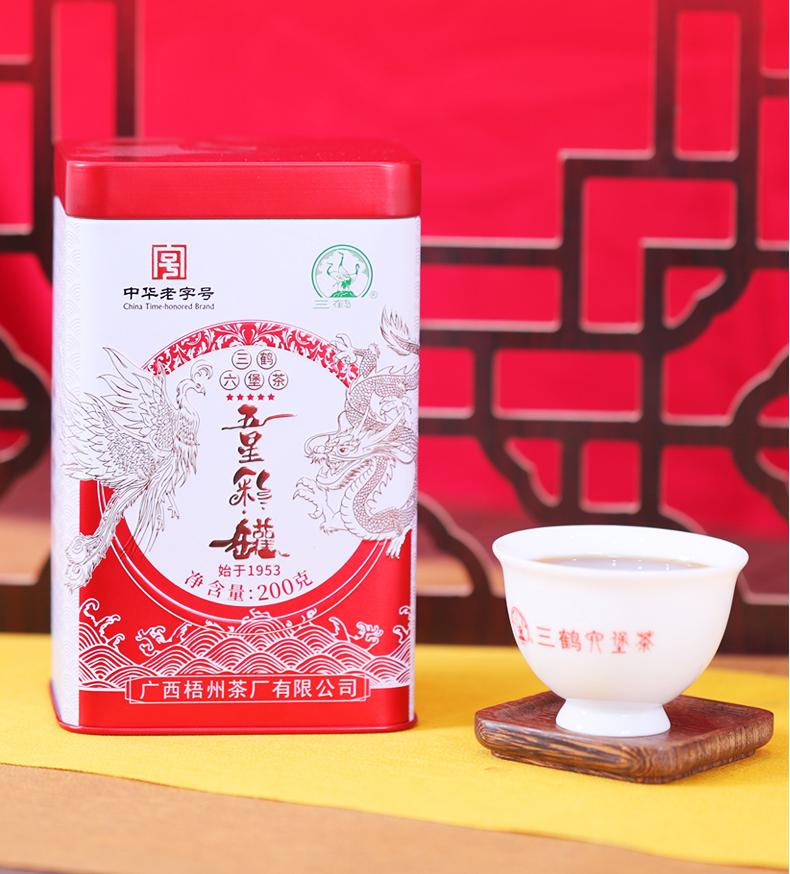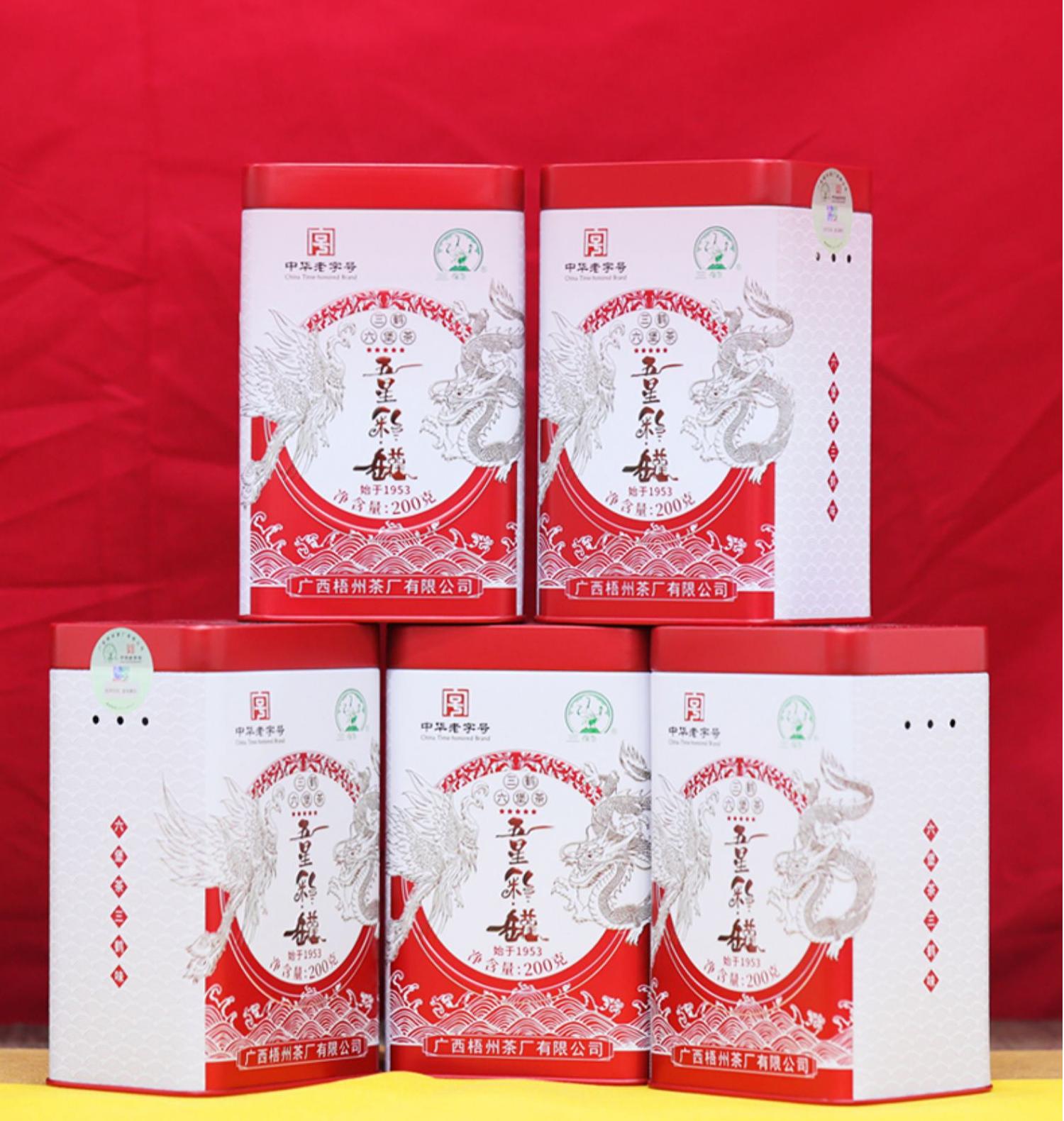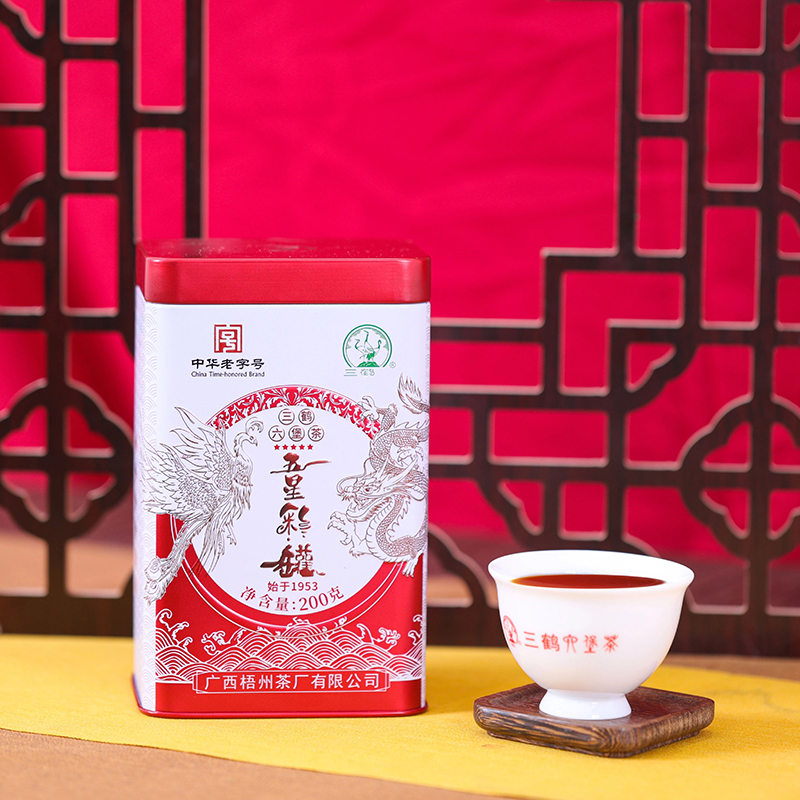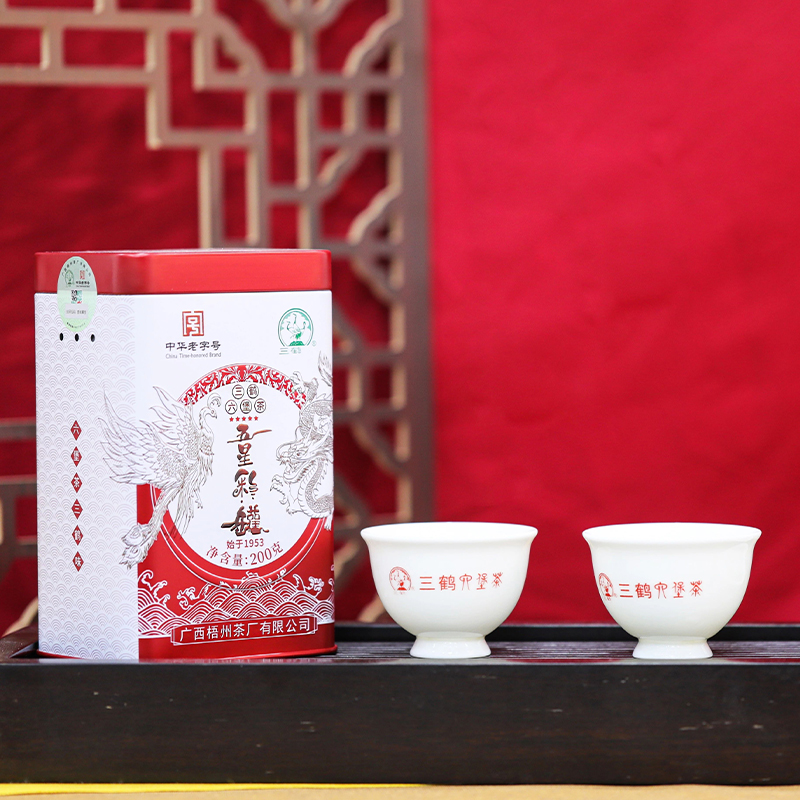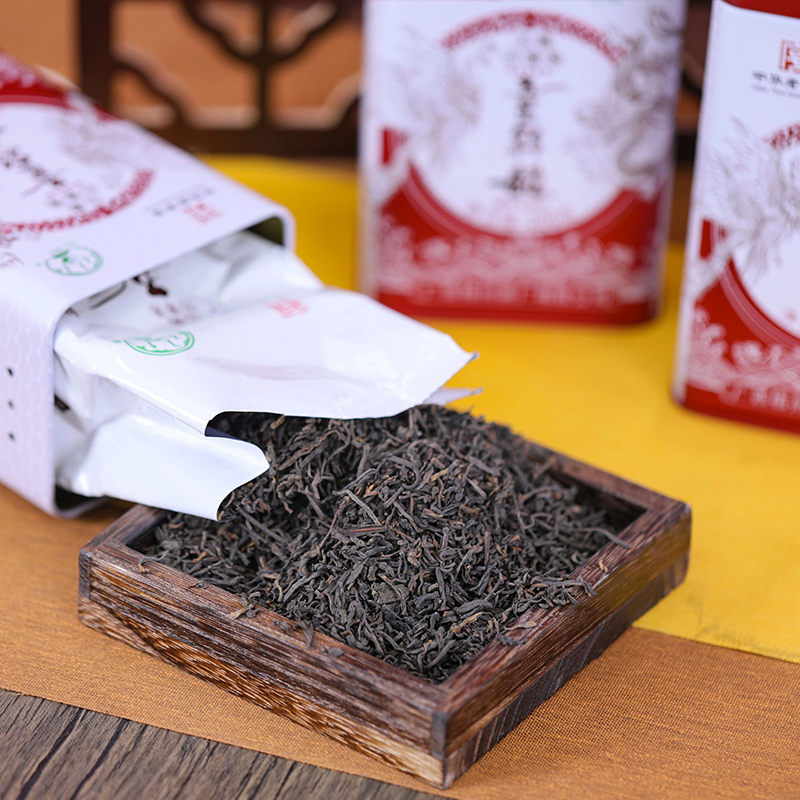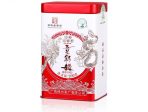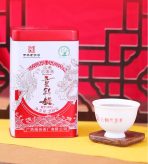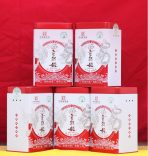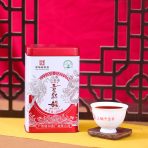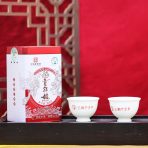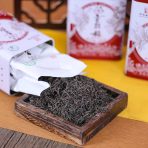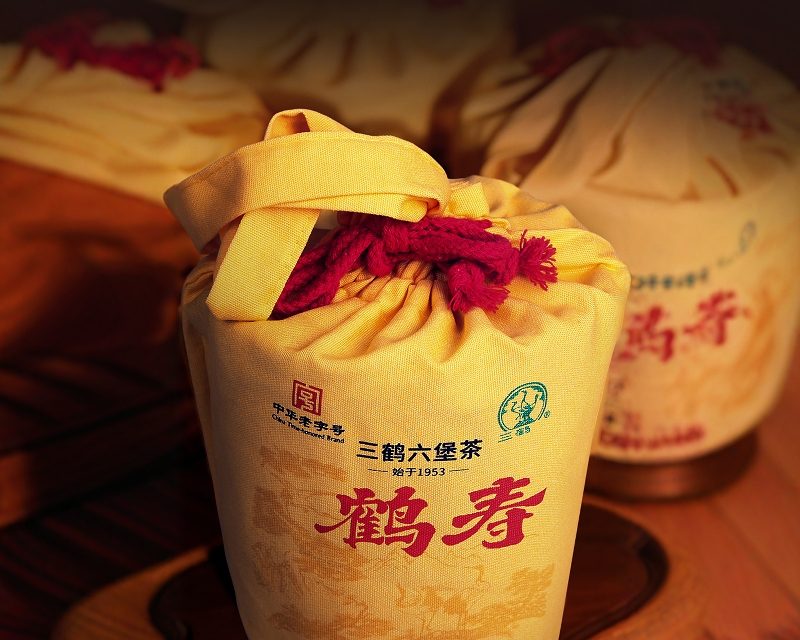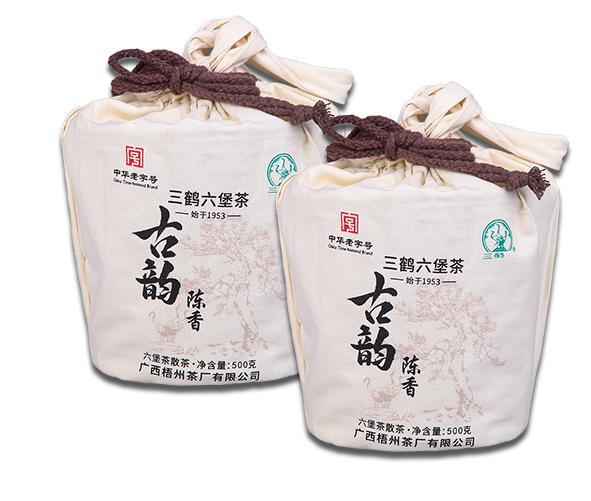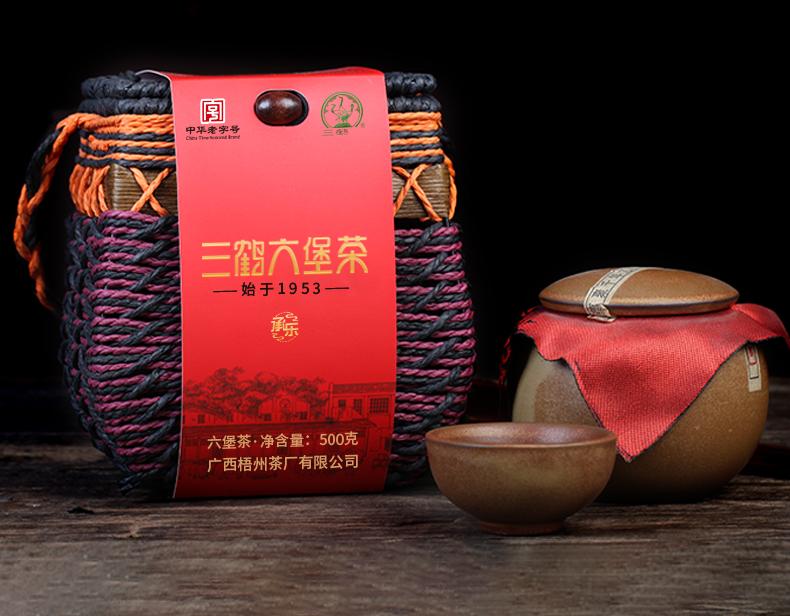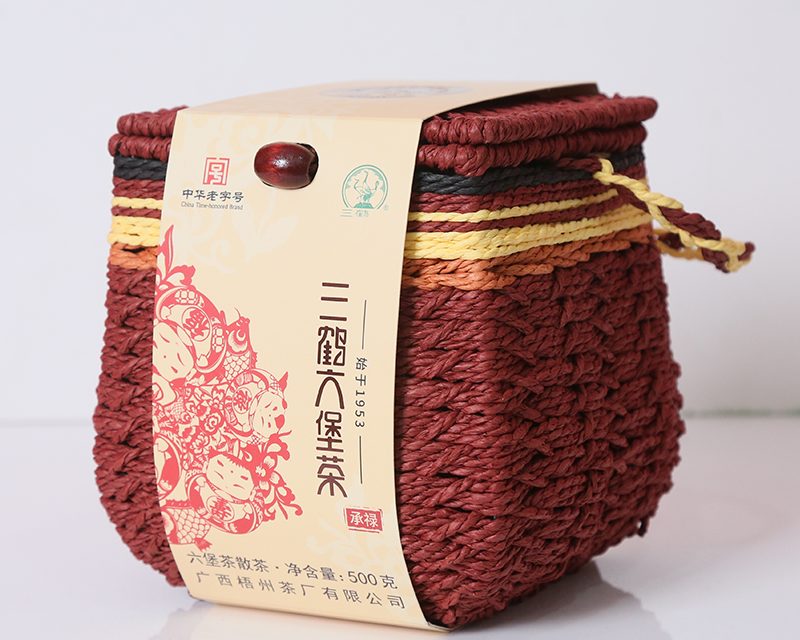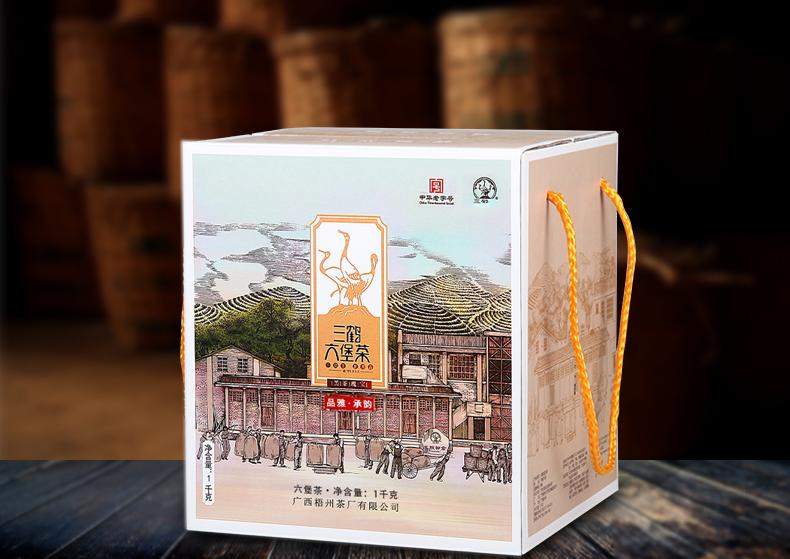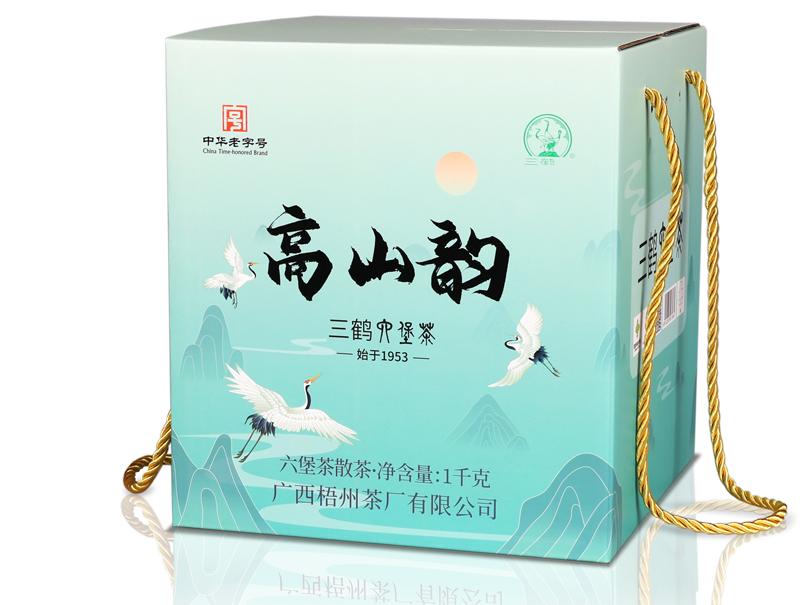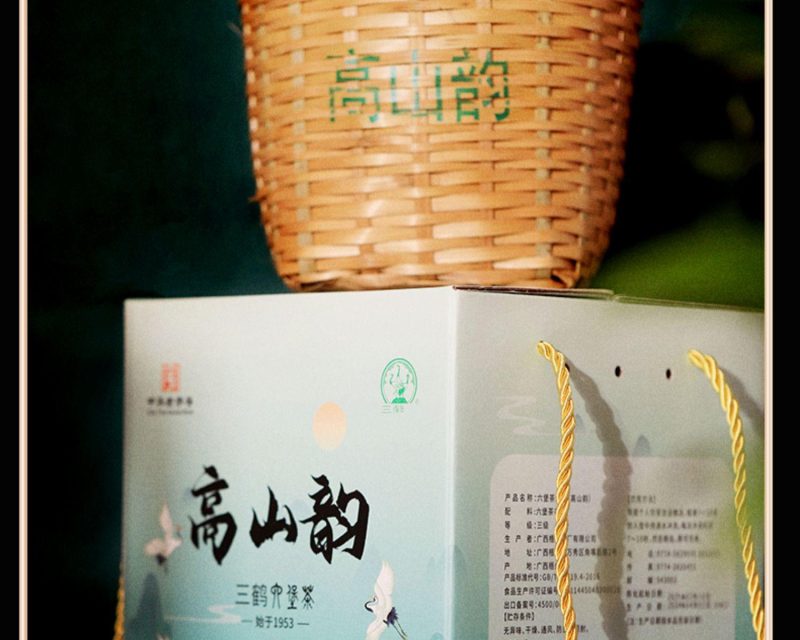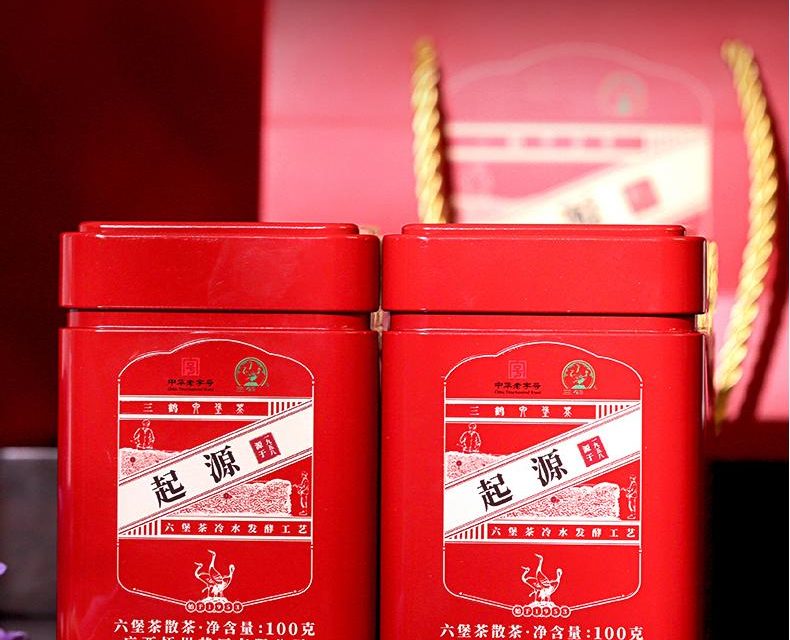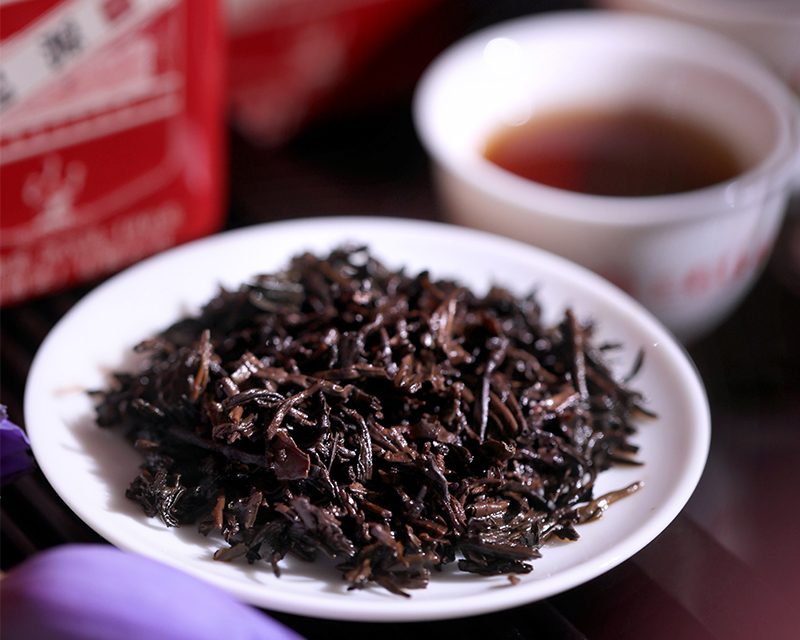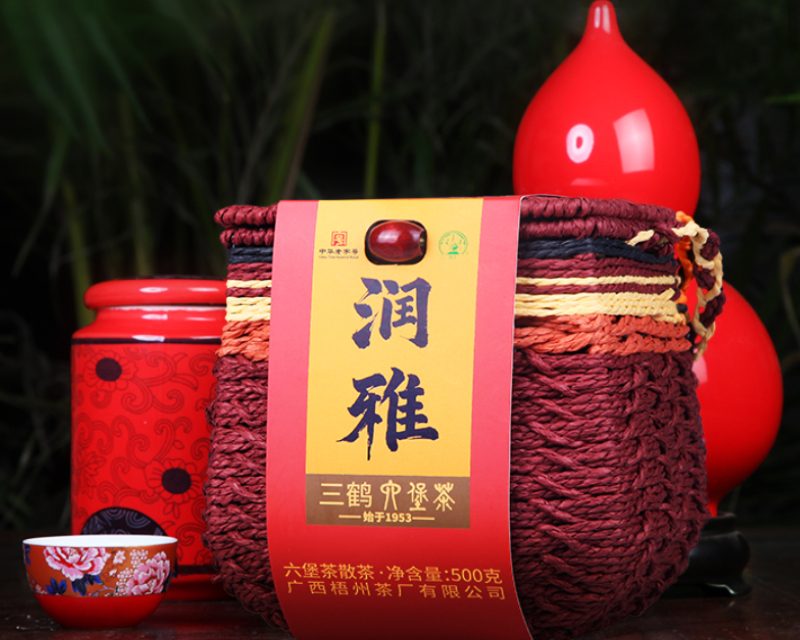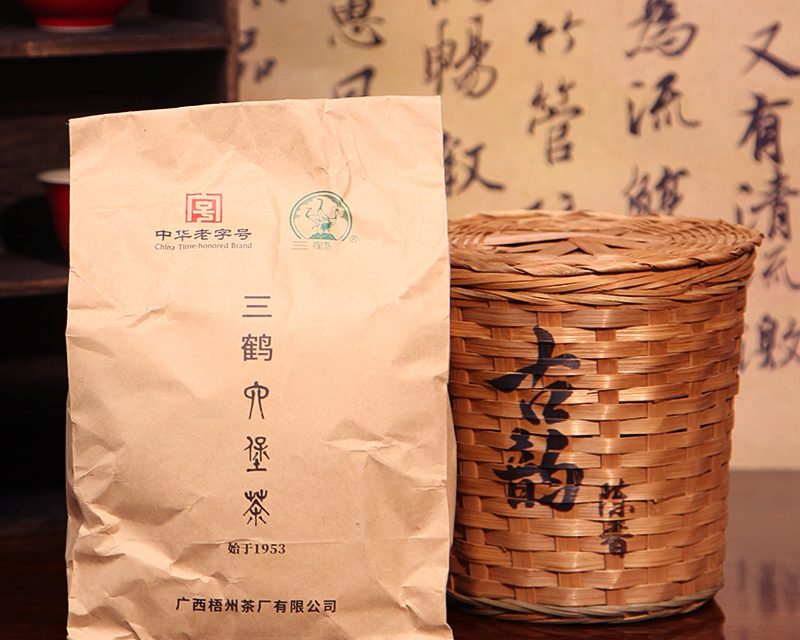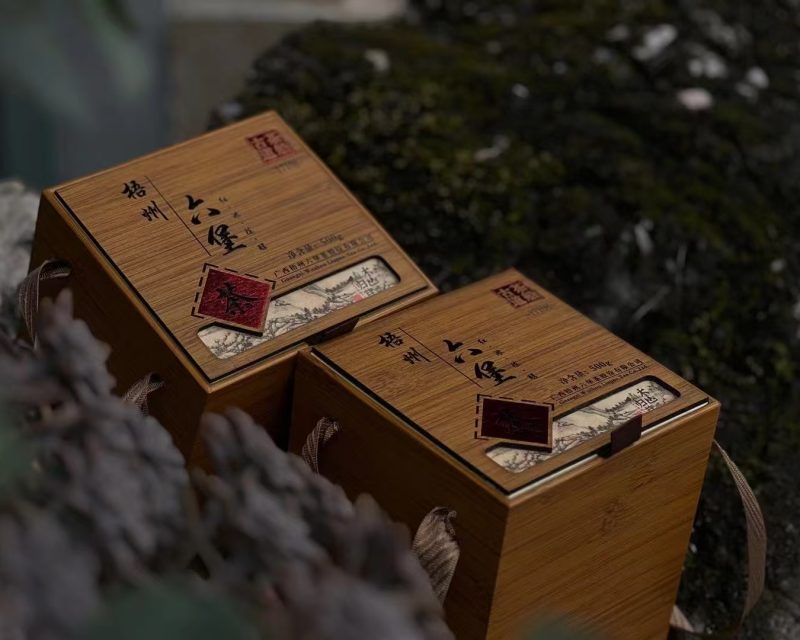Production Craft and Raw Materials
Sanhe [Five-Star Color Can] uses premium-grade Liubao tea leaves, processed through the traditional “multi-warehouse aging” technique (combination of cave storage and wooden dry warehouse). Relying on Wuzhou Tea Factory’s 4,000㎡ constant-temperature/humidity cave (20°C~26°C, 70%~80% humidity), Eurotium cristatum (Jinhua, golden flowers) naturally colonize the tea, catalyzing polyphenol oxidation and polysaccharide transformation to form the iconic “red, rich, aged, mellow” profile. Aged since 2020, the loose tea structure preserves porosity for continuous microbial metabolism, enhancing broth thickness over five years of storage.
Dry Tea Characteristics
Loose tea strips are tight, fine, and uniform, with a dark brown, lustrous color and visible golden tips. Sparse Jinhua (natural formation) and pure aged aroma with subtle betel nut hints reflect premium-grade tenderness and cleanliness.
Soup Color and Taste
Brewed to a rich red and clear soup, it opens with pure aged aroma, mellow sweetness, and silky texture. Mid-infusions reveal betel nut and woody notes with persistent . The finish offers cool throat refreshment and long-lasting aftertaste, maintaining stability over five infusions—exemplifying premium tea’s endurance and complexity.
Tea Leaf Base
The leaf base is soft, plump, and elastic, with uniform brownish-red color and vivid leaf edges (sign of moderate fermentation). Distinct buds and leaves demonstrate raw material freshness and precise craftsmanship, promising further aging potential.
Benefits and Value
Metabolites from Eurotium cristatum (amylases, oxidases) work with tea polysaccharides and theanine to regulate gut microbiota, combat oxidation, and reduce lipids. As a geographical indication product of Wuzhou, the 2020 loose tea balances immediate drinkability and collectibility. Its convenient loose form and stylish can packaging blend tradition with modernity, ideal for daily enjoyment and gifting.


